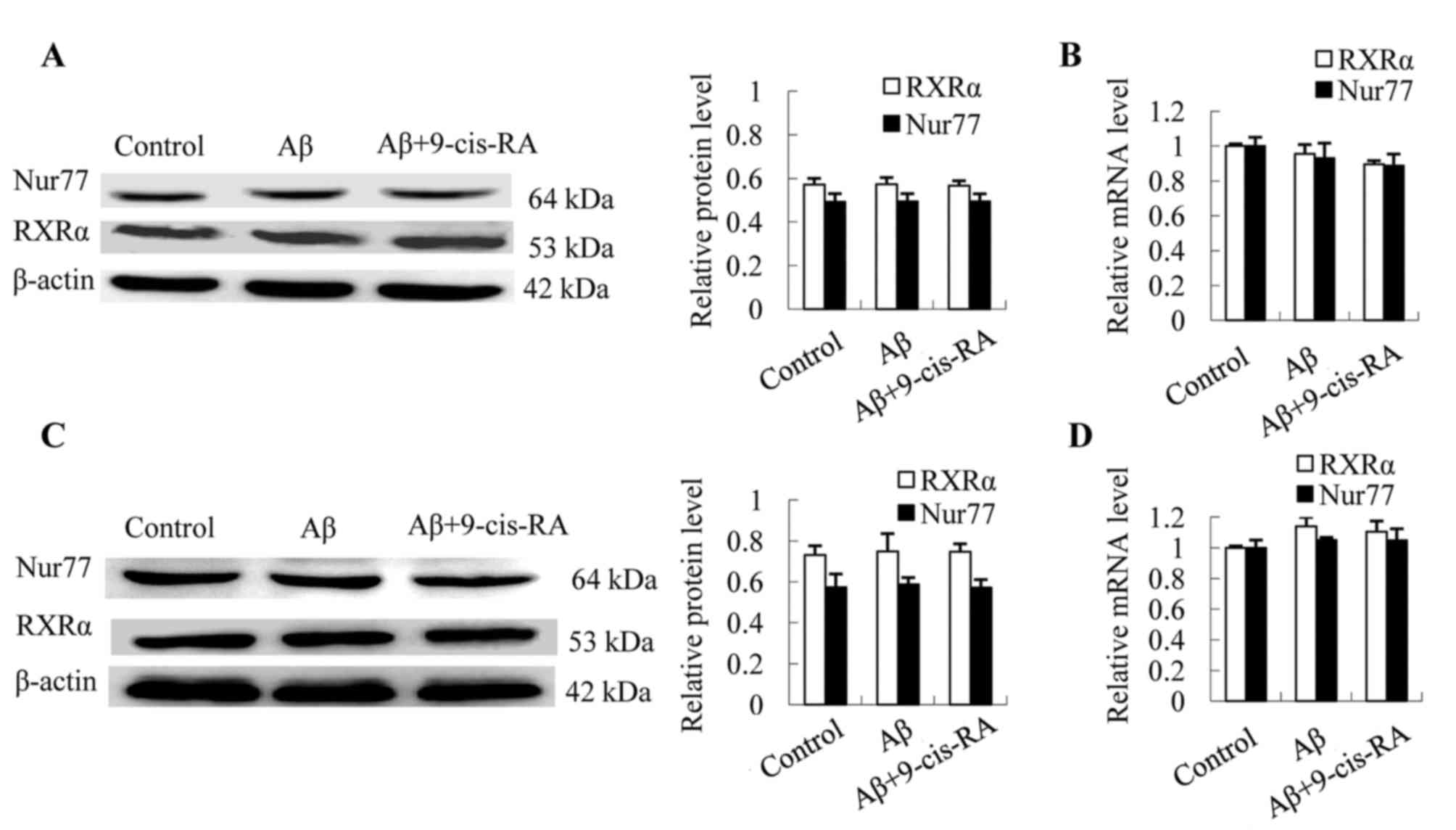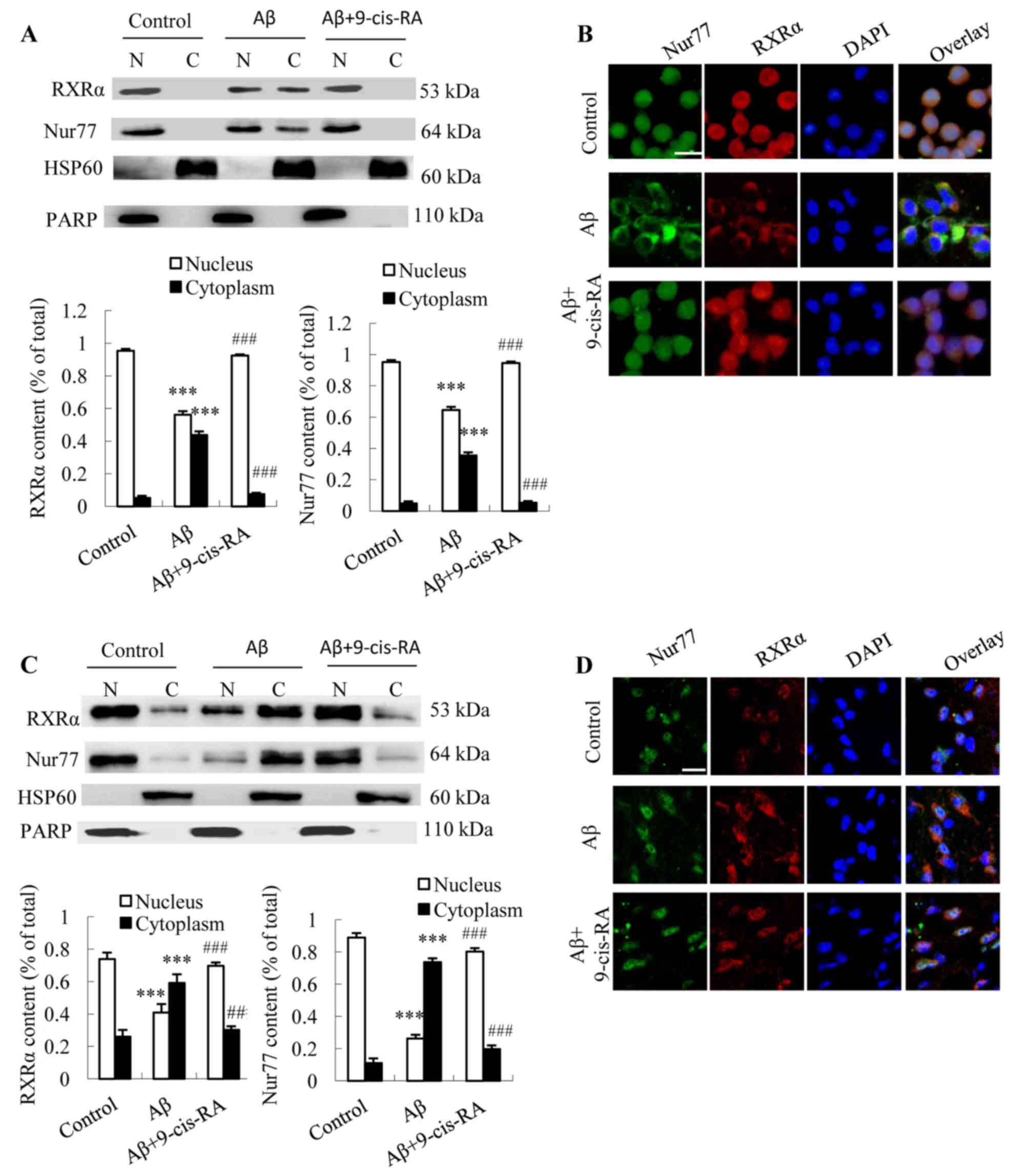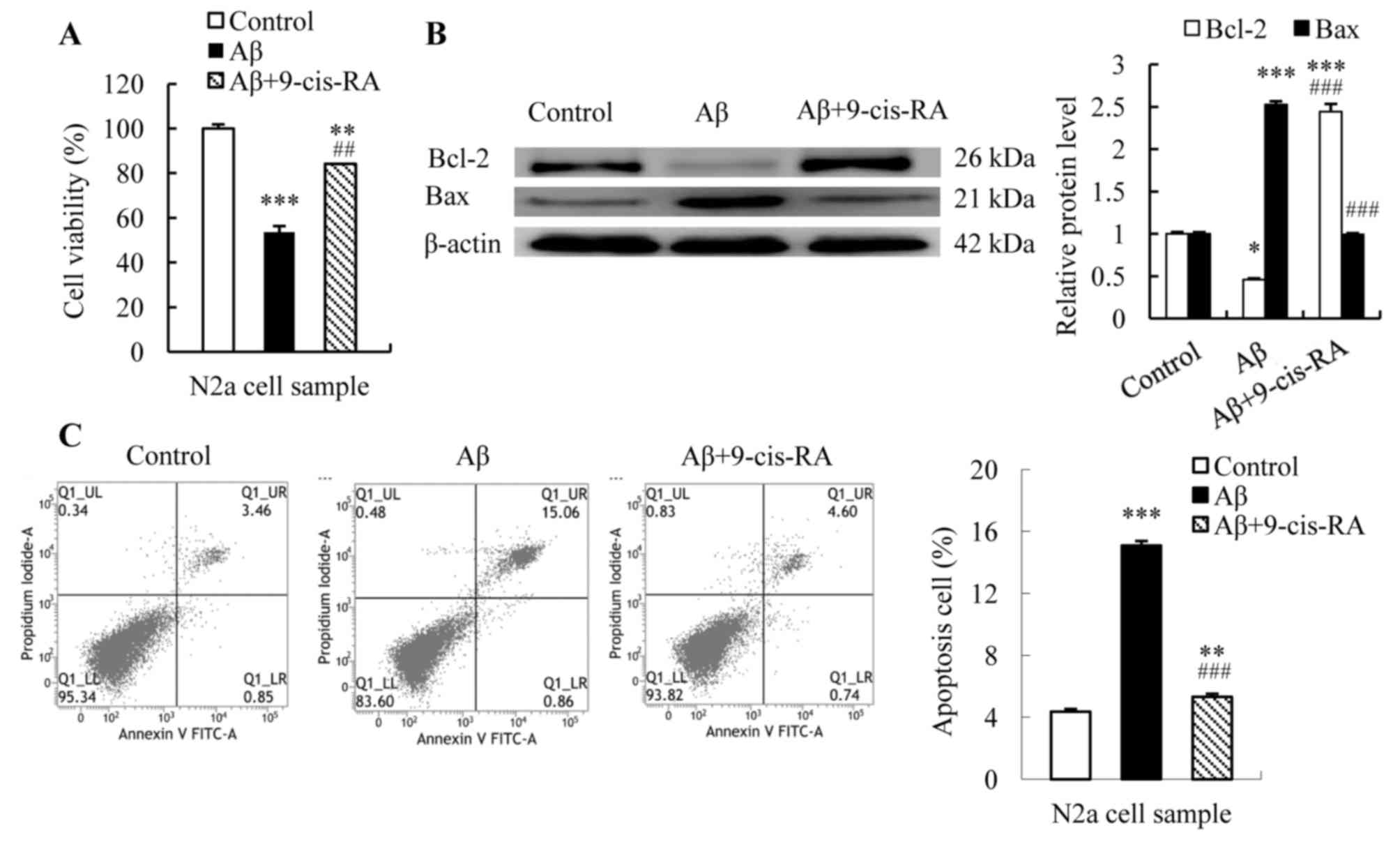Effect of retinoid X receptor-α nuclear export inhibition on apoptosis of neurons in vivo and in vitro
- Authors:
- Published online on: June 14, 2017 https://doi.org/10.3892/mmr.2017.6766
- Pages: 2037-2044
Metrics: Total
Views: 0 (Spandidos Publications: | PMC Statistics: )
Total PDF Downloads: 0 (Spandidos Publications: | PMC Statistics: )
Abstract
Alzheimer's disease (AD), which is characterized by excessive apoptosis of neurons, is considered to be a global public health crisis. Retinoid-induced apoptosis is dependent on the orphan nuclear receptor Nur77, a transcription factor that is expressed predominantly in brain tissues. Nur77 nuclear export requires retinoid X receptor‑α (RXRα) as a carrier. However, the involvement of Nur77 in mediating β‑amyloid (Aβ)‑induced neuronal apoptosis has not yet been elucidated. The primary aim of the present study was to investigate the potential of Nur77 in Aβ‑induced neuron apoptosis, and to evaluate the effect of RXRα nuclear export inhibition on neuronal apoptosis. Mouse neuroblastoma Neuro‑2a (N2a) cells and mouse hippocampi were treated with Aβ25‑35 or Aβ25‑35 combined with a RXRα ligand, 9‑cis‑retinoid acid (9‑cis‑RA), while untreated cells and mice served as controls. The expression of RXRα and Nur77 was determined using western blotting and reverse transcription‑quantitative polymerase chain reaction analyses, and the translocation of RXRα and Nur77 was detected using confocal microscopy. In addition, the apoptosis and viability of N2a cells was detected using flow cytometry and MTT assays, respectively, and the expression of B cell lymphoma 2 (Bcl‑2) and Bcl‑2 associated X (Bax) was quantified by western blotting. No significant alterations in the protein or mRNA expression levels of RXRα and Nur77 in N2a cells or mouse hippocampi among the three groups were observed. Aβ25‑35 treatment resulted in elevated cytoplasmic protein ratios of RXRα and Nur77 in N2a cells when compared with controls, while combined treatment with Aβ25‑35 and 9‑cis‑RA reduced cytoplasmic protein ratios of RXRα and Nur77 to 6.67 and 5.44% in N2a cells, respectively. The MTT assay results revealed a significant reduction in the viability of N2a cells following treatment with Aβ25‑35 for 24 h when compared with the controls, while the viability of N2a cells treated with Aβ25‑35 plus 9‑cis‑RA significantly increased from 53.65 to 84.10%. Western blotting revealed elevated Bax expression and reduced Bcl‑2 expression in Aβ25‑35‑treated N2a cells when compared with controls, while combined treatment with Aβ25‑35 and 9‑cis‑RA recovered Bcl‑2 expression from 0.46‑fold in cells treated with Aβ25‑35 alone to 2.44‑fold (relative to the control) and decreased Bax expression from 2.52‑fold in cells treated with Aβ25‑35 alone to 0.99‑fold (relative to the control). Flow cytometry analysis revealed that the apoptotic rate of untreated N2a cells was 4.36%, while a 15.1% apoptotic rate was detected in cells exposed to Aβ25‑35 for 24 h and a ~5.31% apoptotic rate was observed in N2a cells treated with Aβ25‑35 plus 9‑cis‑RA. In conclusion, treatment with Aβ25‑35 or Aβ25‑35 plus 9‑cis‑RA demonstrated no significant effect on the protein and mRNA expression levels of RXRα and Nur77. In addition, inhibition of RXRα nuclear export reduced neuronal apoptosis. The results of the present study may provide novel insight into the development of novel anti-AD agents.












